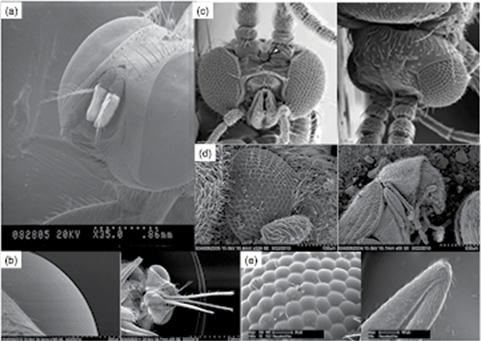Pollinating insects, like honey bees, purposely cover themselves with millions of pollen particles that, if left ungroomed, would make sensing and controlled flight difficult. How do they get clean? We show that the hairs on insect eyes are tuned to the pollen they collect; namely, the hairs are spaced so that they suspend pollen above the body for easy removal by the forelegs. In turn, hair spacing on the foreleg dictates the leg's ability to store the pollen removed during each swipe.
After analysis the principles of cleaning by pollinating insects. An important trait of insects that makes cleaning possible is their hairiness. Cleaning is facilitated by having hairs on both the surface to be cleaned and the cleaner. The geometry of the hair arrays on both surfaces dictate their efficiency. As has been previously suggested, hair spacing on the body is tuned to the particles they collect to facilitate particle suspension for easy removal, while hair spacing on the grooming legs enables the effective transfer of particles from the body to the legs and determines the amount of pollen removed during each swipe.
Additionally, we find that grooming behavior is unaffected by pollen type or initial pollen accumulation. However, the presence of pollenkitt, or the viscous fluid on the surface of pollen, plays an important role in pollen accumulation. Honey bees accumulated half as many pollen grains when the pollenkitt was removed. This study is the first to provide physical insight into the critical process of pollination. The methods used by pollinating insects for accumulating and removing micro-scale particles may motivate designs for cleaning human-made surfaces.

Information Source: https://iopscience.iop.org/article/10.1088/1748-3190/aa5c6e

